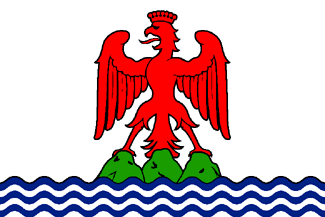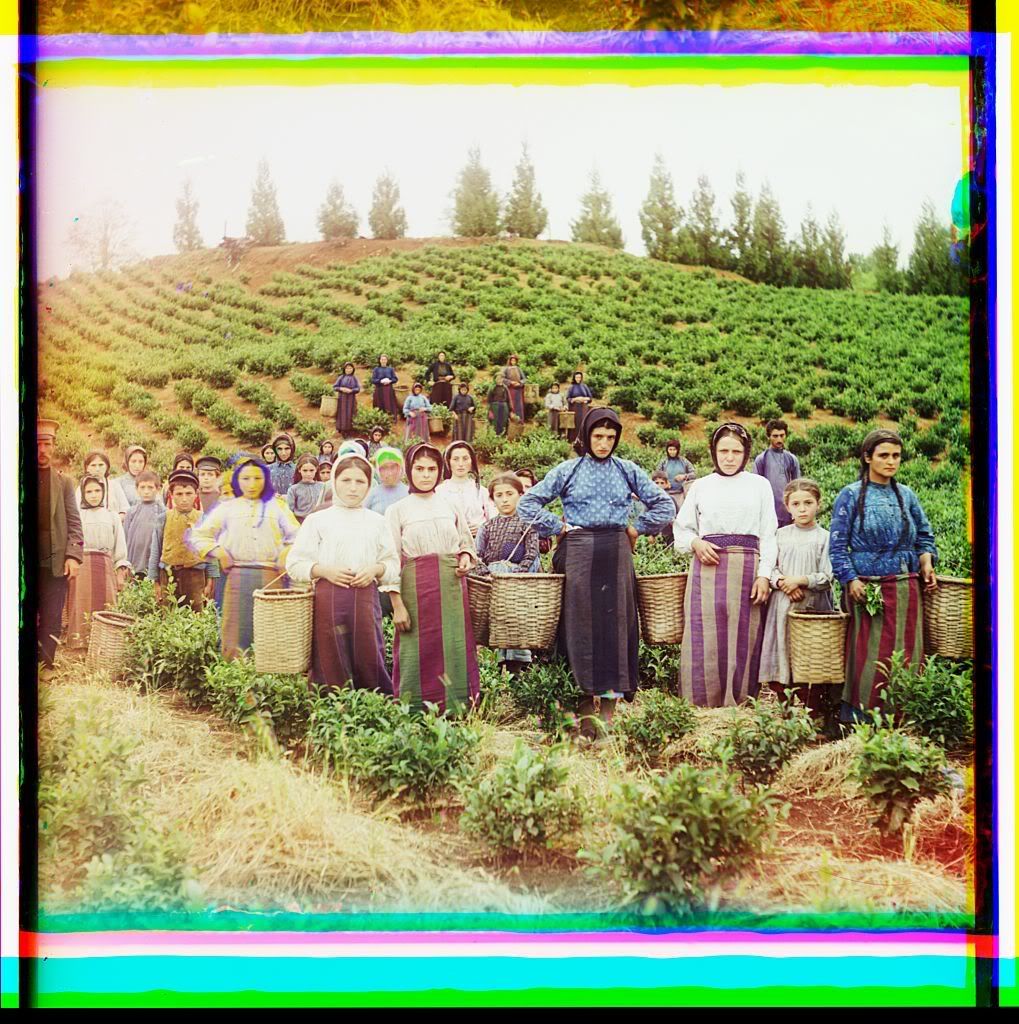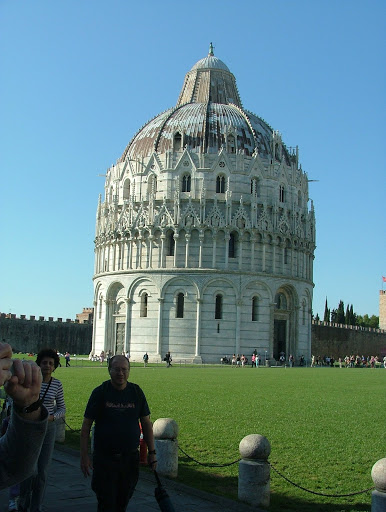
The term "Magna Graecia" means "Greater Greece," referring specifically to the ancient Greek colonies in Southern Italy and Sicily. There were also Greek colonies all over the Black Sea coasts, the Mediterranean coasts, North Africa coasts, around Asia Minor, and up to the British Isles. I think they were more-or-less autonomous, but don't hold me to that point. During Alexander the Great's conquests, the empire was expanded to a huge area, but I doubt that much of it reflected the culture of Greece, due to it's sheer size. What we're discussing here is the Greek influence, over centuries, that was made in small steps apparently, and not really by conquest, and did indeed reflect Greek culture. Specifically, how it affected Northern Italy.
On the Italian peninsula, Naples was the furthest northern colony of strong significance. I said of "strong significance," and not of any significance. Southern France also had a number of colonies, but not much in Northern Italy. The reason is that the Etruscan civilization was flourishing, encompassing from roughly north of Naples, to the edge of Lake Garda. Not all of the north, but most of it.
We see, stretched across Southern France, an underrated amount of influence. Similar to Southern Italy. One colony outpost was at "Massilia," which is modern Marseilles. West of Marseilles is the coastal region of the Languedoc, also a former Greek colony. In fact, incredibly, up to the nineteenth century, they actually spoke a Greek dialect! The following text is from pages 91-92 of the book 'Rule By Secrecy' (Jim Marrs; 2000), in the section regarding the Cathars:
"The Languedoc, formerly known as Occitania, encompassed the Mediterranean coast west of Marseilles, the Black and Corbieres Mountains and the Pyrenees, which separated the area from Spain. An independent state, the region was more closely tied to the Spanish frontier and the vestiges of the old Septimanian kingdom than to the newly forming French nation. Languedoc was a crossroads where travelers passed to and from the Middle East via Muslim Iberia and the sea.
"With the breakup of the Carolingian empire created by Charlemagne following his hard-won conquest of the area in A.D. 801, this corner of the old Roman Empire fell under the control of various kings of the Francia or Franks, the name of which soon would be applied to the entire nation—France.
"Languedoc was home to a number of ancient towns, many of which traced their origin to the Greeks and early Romans. It had its own traditions, culture, and its own language. The language of Occitania or Langue d’Oc gave the area both its identification and its name.
Perhaps due to this convergence of ideas and traditions, the Languedoc was more cultured and prosperous than its neighbors."
 Greeks in Northern Italy
Greeks in Northern ItalyGenoa: I had always heard that Genoa was once a Greek colony, but apparently not. I can't find a bit of evidence to suggest that the ancient Greeks where there. Certainly there must have been trade with the Greek world, but it appears that Genoa was in the Etruscan sphere of influence. Maybe someone out there can help us out here?
Nizza (Nice, France): From the Wikipedia entry for Nice: "Nice (Nicaea) was probably founded around 350 BC by the Greeks of Massilia (Marseille), and was given the name of Νικαία ("Nikaia") in honour of a victory over the neighbouring Ligurians (Nike is the Greek goddess of victory). The city soon became one of the busiest trading ports on the Ligurian coast; but it had an important rival in the Roman town of Cemenelum, which continued to exist as a separate city until the time of the Lombard invasions. The ruins of Cemenelum are located in Cimiez, which is now a district in Nice."
Tarquinia (in northern Lazio): From the Wikipedia entry for Tarquinia: "Tarquinii (Etruscan Tarchnal) is said to have been already a flourishing city when Demaratus of Corinth brought in Greek workmen. It was the chief of the twelve cities of Etruria, and appears in the earliest history of Rome as the home of two of its kings, Tarquinius Priscus and Tarquinius Superbus. From it many of the religious rites and ceremonies of Rome are said to have been derived..." Apparently, not a Greek colony, but a strong "Greek influence." Probably a better way to look at it, a center of the Greek to Roman passing of the torch.
Spina (Wiki says: "Etruscan port city on the Adriatic at the ancient mouth of the Po"): From the Wikipedia entry for Spina: "Spina was an Etruscan port city on the Adriatic at the ancient mouth of the Po, south of the lagoon which would become the site of Venice. The site of Spina was lost until modern times, when drainage schemes in the delta of the Po River in 1922 first officially revealed a necropolis of Etruscan Spina about four miles west of the commune of Comacchio. The fishermen of Comacchio, it soon turned out, had been the source of "Etruscan" vases (actually originally imported from Greece) and other artifacts that had appeared for years on the archeological black market.
"The archaeological finds from the burials of spina aerial photography. Aside from the white reflective surfaces of the modern drainage channels there appeared in the photographs a ghostly network of dark lines and light rectangles, the dark lines indicating richer vegetation on the sites of ancient canals. Thus the layout of the ancient trading port was revealed, now miles from the sea, due to the sedimentation of the Po delta. Spina had a Hellenized indigenous population."
Lombardy: From the Wikipedia entry for Lombardy (wine): "The winemaking tradition of Lombardy dates back to its settlement by Greek colonists from Athens along the Po river. Archaeological evidence suggest that these settlers traded wine with the Etruscans in nearby Tuscany.[3] In the late 19th century, the Italian wine writer C.B. Cerletti wrote a book for the French market that described the wines of Italy. Of the wines of Lombardy he noted that the Valtellina were still being made in a Greek style and the wines of Oltrepò Pavese were the preferred wines of the Milanese.[4]
3 - H. Johnson Vintage: The Story of Wine pg 39 Simon and Schuster 1989 ISBN 0671687026
4 - H. Johnson Vintage: The Story of Wine pg 421-422 Simon and Schuster 1989 ISBN 0671687026"

Battle of Lepanto
There were three "Battles of Lepanto" actually, during the Ottoman-Venetian Wars. I'm having a difficult time linking this information, due to this, so you can find all of the Wikipedia links regarding this period here. The most significant of these three battles, and one of the most significant of all time, was the one in 1571. A Venetian-led combined force of European-Christian allies defeated the Ottoman Turks at Lepanto (Naupaktos, Greece), and prevented their designs on conquering Europe.
A Shameful Event
Apparently, at one point during the Venetian Empire, there was a conflict between the Venetians and Greeks. Although I don't feel like looking this up at this time, I recall some type of Venetian admiral ordered a volly of cannon fire at a Greek city (Athens?), and this did at least some damage to some ancient ruins. It possibly may have even been the Acropolis. I don't recall. There was no justification for this dishonorable action, regardless of what political or economic dispute may have occurred.
 Greeks and Phoenicians
Greeks and PhoeniciansPredating what we know as ancient Greece, was the Phoenician culture. Despite the fact that Phoenicia was not in Europe (Phoenicia was based in what is now Lebanon, and probably a territory that stretched beyond that a bit), the Phoenicians provided what was much of at least the initial spark of what was later transformed into Western Civilization. The Phoenicians were not Arabs, who lived in the Saudi Peninsula until the seventh century. They were ancient Mediterraneans.
The Phoenicians also had many colonies, and a large "trade empire" (I use this term loosely). What is interesting is that it appears that the host peoples were basically pretty receptive to Greek and Phoenician influence. The Phoenicians had colonies, concurrently with the Greeks, also along the coasts of the Mediterranean, and even up to the British Isles, and many other places. There's even evidence that they were mining in southeast Africa at one point. The website Phoenicia.org has a lot of information of how far and wide they traveled.
The Phoenicians didn't, as far as I know, affect Northern Italy much. Of course, there must have long been Phoenician-Etruscan trade. They did have colonies all around the Mediterranean (the western Maghrib coast, southern Iberian coast) as well as even in Italy (western Sicily, parts of Sardinia). I don't really see where there was much conflict. Maybe someone can clue us in on that point. There seemed to be much cooperation between pre-Roman Greeks, Etruscans, and Phoenicians. At this time, Egypt was still very much viable, but they didn't appear to be colonizing northwards, just as the Etruscans seemed to be happy in their general area.
11-18-08 Note: I had meant to point out that Carthage, possibly Rome's greatest foe (see "Punic Wars"), was a Phoenician colony. Another way to look at this is that Etruscan civilization gave rise to Rome (which stamped out Etruscan culture), and the Phoenician trade empire gave rise to Carthage. Two true empires, as opposed to peaceful trade networks, could not co-exist in this manner for very long.







